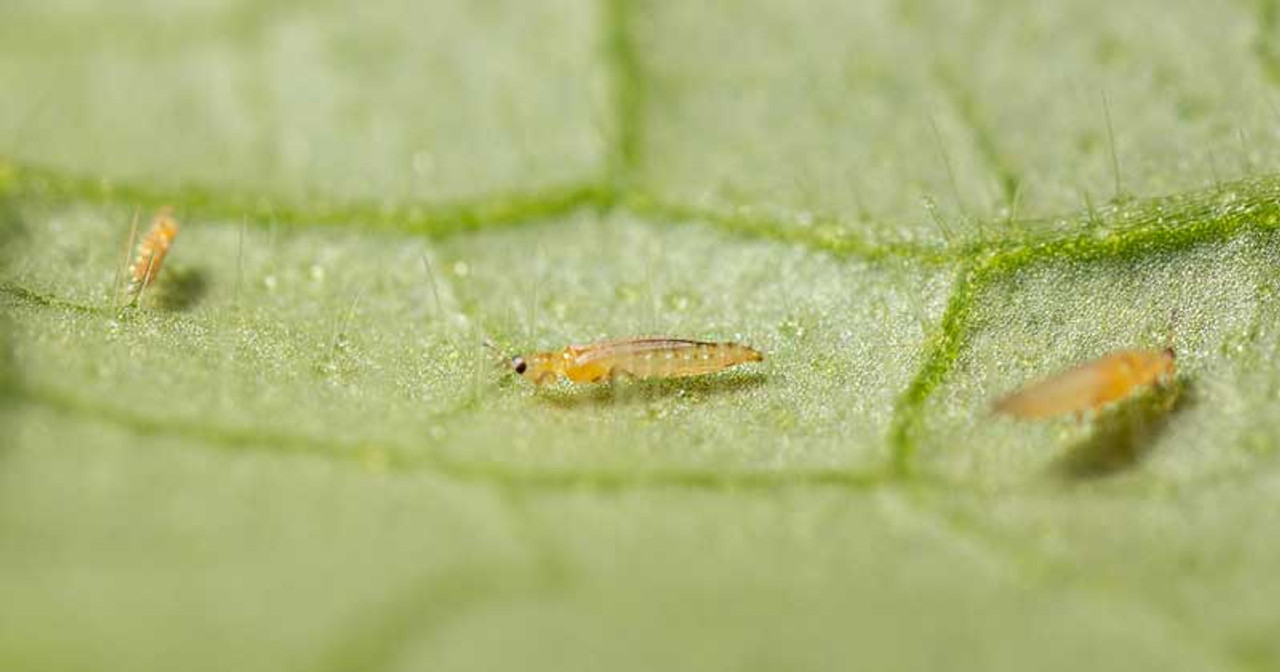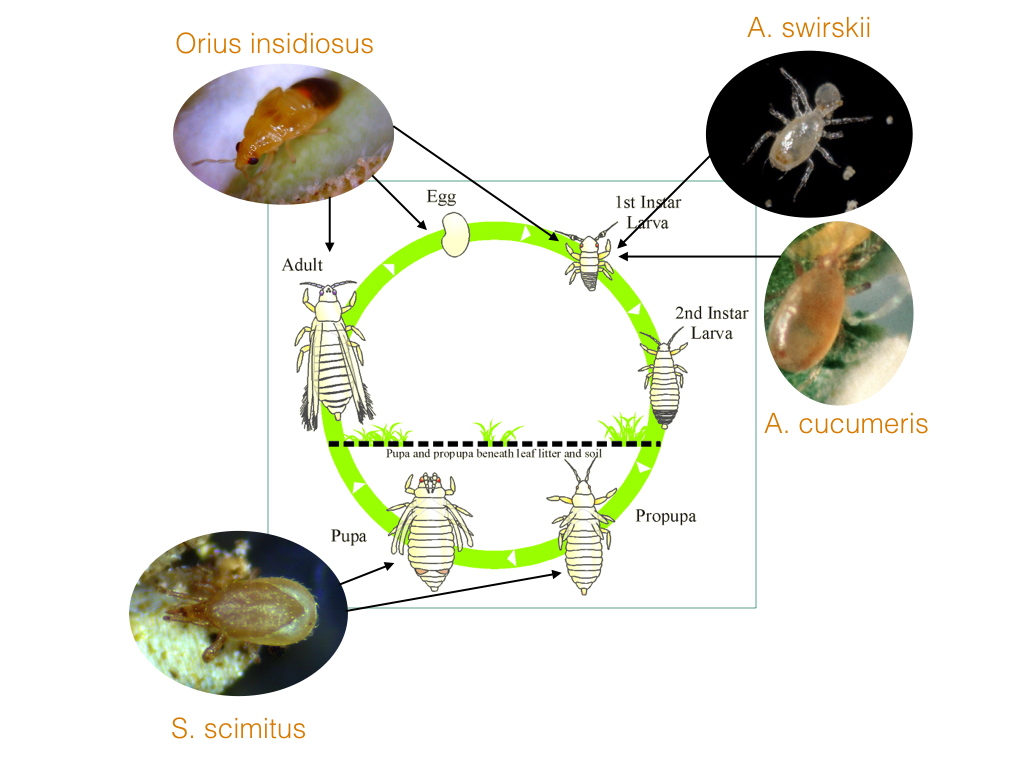Thrips Frankliniella occidentalis

There are several species of thrips that feed on cannabis. In cannabis production, the most common is the Western Flower Thrips, Frankliniella occidentalis. However, other similar thrips species like onion thrips and even Echinothrips have been found by cultivators. We will focus on the Western Flower thrips in this section.
FAQs About Thrips
Western Flower Thrips are the most common species of Thrips in agricultural/horticultural facilities. They can be found crawling on plants especially within the flowers and growing points of the plant where they shelter, feed, and reproduce. Nearly all facilities will experience Thrips infestation at some point since the insect is small enough to fit through nearly every type of insect netting available. They are great fliers and will travel in great numbers when outdoor crops are disturbed during harvest or other crop activities. Their damage resembles small scrapes which discolor the surface of leaves and flowers. They can also vector viruses.
As with any pest, breaking the reproductive life cycle is key to controlling Thrips. This can be done by simultaneously controlling adults and nymphs with natural enemies and/or chemical products and targeting the pupal stage of the insect with beneficial mites and nematodes in the soil. Trapping large numbers of flying adults above the canopy with sticky tape or cards can stop incoming Thrips from establishing in the crop. Eradication is almost impossible so keeping populations below damaging thresholds is key.
Western Flower Thrips are attracted to ultraviolet signals from plants and flowers that are invisible to the human eye. Thrips search out fresh food sources such as developing flower buds and plant tissue on which to feed and lay their eggs. Yellow sticky cards and tape reflects similar UV signals which Thrips are attracted to. Placing these sticky traps above the canopy can catch incoming fliers as well as attract existing populations out of the crop.
Questions About Thrips?
Our team of experts is at your disposal to help you make the best decisions according to the particular needs of your crop. Do not hesitate to call us during normal business hours at (503) 342-6698 or write us through our chat to provide you with personalized service. We will be more than happy to help you!



